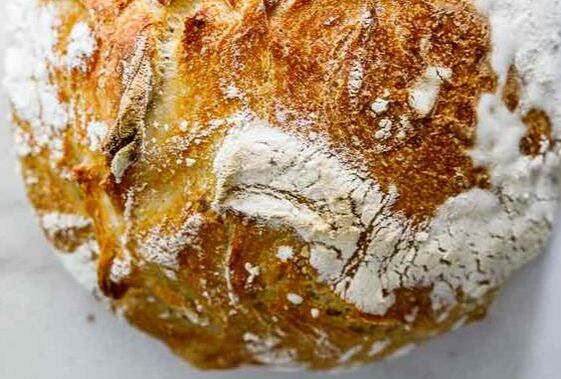The Maillard Reaction is a form of non-enzymatic browning that occurs in foods when proteins and/or amino acids chemically react with carbohydrates of reducing sugars. Applying heat during cooking accelerates and continues this intricate process, which elevates the taste, aromas, and appearance of food. It's responsible for creating hundreds of new flavour and aroma compounds with the application of heat. The chemical reaction is the visible colour change to a stunning golden-brown hue on the surface of foods. It’s the perfect crust on a seared juicy ribeye steak. It’s the crispy amber layer on a pan-fried piece of fish. It’s the flaky golden crust on a baked apple pie. It’s the toasty and malty flavour and aroma of baked bread, the burgers that taste charred and what makes coffee taste dark and robust. And it’s why our recipe here for an easy but artisan-worthy brown and crusty bread will have the grandchildren lining up for a slice as soon as it’s out of the oven! Serves 8
Note: You’ll need a Dutch Oven or an oven-safe pot with a lid.
Note: You’ll need a Dutch Oven or an oven-safe pot with a lid.
Brown Crusty Bread
METHOD:
- In the bowl of a stand mixer, combine the water, sugar and yeast. Allow to stand for 5 minutes until foamy.
- Add the flour and salt, then knead with the dough hook for 5 minutes.
- The dough will be slightly sticky but should not be wet. If it is, add 1-2 tablespoons of flour and knead in.
- Bring the dough together into a ball with your hand. Dust over 1-2 tablespoons of flour (you want it to be well covered).
- Cover the bowl with a damp tea towel and allow the dough to rise for 1-hour until doubled in size. Leaving the dough in a warm spot will aid the rising.
- Preheat the oven to 180°C/350°F. Place a pot (Dutch Oven) with a lid into the oven to preheat.
- When the dough has proved, turn it out onto a floured surface. Fold the edges into the centre of the dough, then place into a floured bowl, seam side down. Dust over more flour.
- Cover with the tea towel again and allow to rise for another 30 minutes.
- Carefully remove the pot from the oven and remove the lid. Transfer the dough to the pot and cover with the lid.
- Place in the oven and allow to bake for 30 minutes.
- Remove the lid and bake for another 10-15 minutes or until the bread is golden brown.

